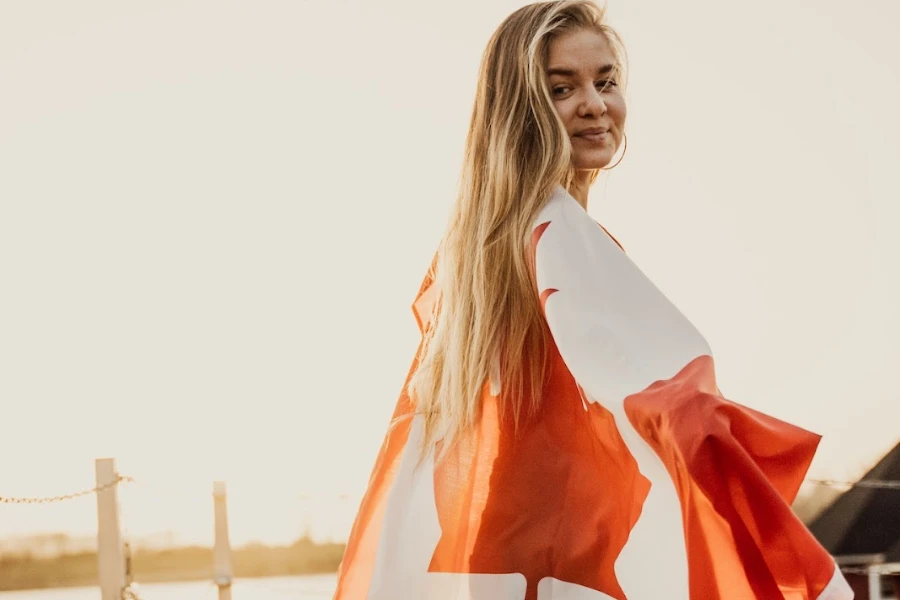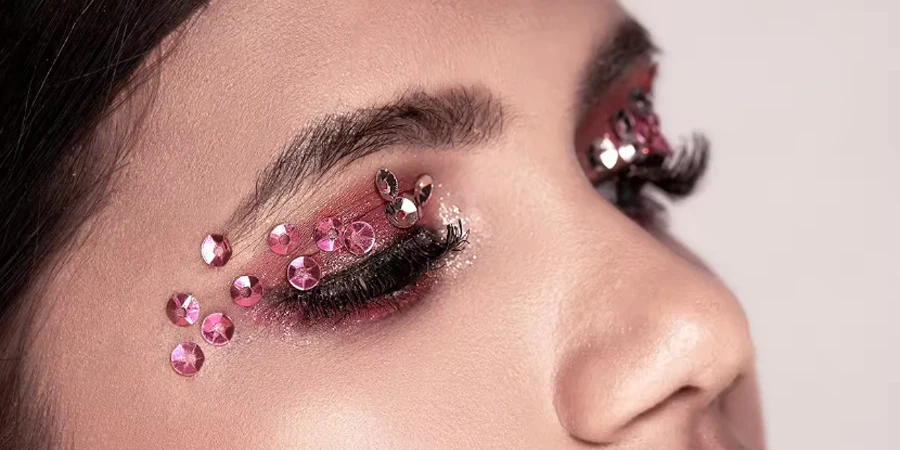North America’s vast beauty market is characterized by diverse cultures, styles, and beauty priorities. Learn the difference between the three key markets of the US, Canada, and Mexico, highlighting the key drivers, choices, and opportunities across each region.
Table of Contents
Overview of the North America beauty market
US: Beauty profile
Canada: Beauty profile
Mexico: Beauty profile
Personalizing beauty for North American markets
Overview of the North America beauty market
North America’s beauty and personal care market was valued at US $102.8 billion at the end of 2022. The US was the largest market, both regionally and globally, and had a value of US $87.13 billion with a projected compound annual growth rate (CAGR) of 3.06% between 2022 and 2027.
The Canadian market was valued at US $7.78 billion at the end of 2022, and has a projected CAGR of 2.44% between 2022 and 2027. In comparison, the Mexican market was valued at US $7.93 billion, with a projected CAGR of 4%.
Despite the economic instability experienced throughout the pandemic and the rising cost of living, North American consumers still prioritize their beauty and self-care rituals. However, they are more cost-conscious than in the past.
Similar to other beauty markets, health and wellness are at the forefront of the North American beauty market, with personal care leading at a value of US $48.18 billion. In the US and Canada, increased financial stress is seeing consumers prioritize their well-being and mental health above all else.
In Mexico, cautious spenders are turning to their communities to help local businesses recover, connect with others, and feel a sense of purpose when purchasing everyday beauty and personal care products.

US: Beauty profile
The US spans 50 states and 3.8 million square miles, constituting the world’s largest beauty market. As a result of its size, the market is made up of diverse climates, cultures, and styles, which make up a diverse consumer base.
US consumers drive beauty buzz across social media and are eager to hop on to viral trends. The rise of TikTok has created a source of inspiration and a pivotal path to purchase for many consumers, with #TikTokMadeMeBuyIt rising to the platform’s top five hashtags in 2022 in the US.
The typical beauty consumer in the US fits into a couple of categories, including those who enjoy experimenting with viral beauty aesthetics and bold looks and those who prefer the ‘no makeup’ makeup look and focus on a healthy glow.
New priorities following the pandemic have seen an increased focus on skin health and wellness, favoring “lazy” beauty solutions and becoming increasingly “skintellectual”. Consumers tend to have a skincare-first mindset, lean toward products with natural ingredients, and love the ease of multifunctional formats.
US: Beauty priorities and strategies
US beauty consumers have adopted a ‘no BS’ attitude on everything from sustainability to diversity and inclusion: 64% of Americans consider sustainability important in beauty, while 68% would like to see more diversity in advertising, including a broader range of skin tones, types, ages, genders, and inclusive language.
With an average age of 38 years, 62% of Americans use anti-ageing products daily. RoC skincare found that 90% of women between the ages of 25 to 69 years feel anxious about getting older, placing anti-ageing as the top skin concern among Gen X and Boomers.
However, the aging outlook is beginning to shift among younger generations. Millennials and Gen Z are more likely to focus on aging healthily and providing a youthful-looking glow, so solutions that support and work with the body’s naturally changing needs will succeed.
There is also a shift in mindset regarding sex, with 72% of Americans interested in exploring different sex trends. Sexual wellness will become part of health and wellness, promoting pleasure and well-being via mists, lubricants, fragrances, and supplements.

Canada: Beauty profile
With a focus on health and well-being, consumers in Canada are gravitating toward products that enable them to take better care of themselves, their peers, and the environment. Affordable indulgences will appeal alongside those that support the local community.
Canada is home to over 600 indigenous communities, spanning 6.3% of the total landmass and making up 5% of the population. Indigenous beauty practices and traditional ingredients honoring these groups and protecting indigenous land are critical.
Canada’s humid summer and freezing winter make sensitive skin a key beauty priority. One million Canadians have been diagnosed with psoriasis, two million with rosacea, and 10–20% of people live with eczema — higher than the global average.
Changing seasons must be reflected in skin care ranges, especially as it applies to sensitive skin types, such as moisture-locking solutions for the winter, cooling and anti-inflammatory ingredients for the summer, and SPF year-round.
Canada: Beauty priorities and strategies
Financial stress is weighing on Canadian consumers, who, as a result, are valuing transparency and product reviews to inform and validate purchasing decisions. Canadians have marked money as the largest source of stress in the last year.
As a result, nearly 70% of consumers are forgoing sustainable purchases due to higher prices amid the rising cost of living, and 72% no longer feel the need to keep up with seasonal trends. Instead, they are spending more on health and wellness.
With many preferring to shop online, AI and AR try-on tools will help guide shoppers, while ingredient transparency, science-backed solutions, and clinical trials will help support claims and win over factivist consumers. Learn more about beauty personas here.
Mexico: Beauty profile
Heritage is at the heart of Mexico’s beauty scene. A new wave of consumers and brands are fusing modern-day designs with traditional practices and local ingredients that honor its culture and enhance efficacy.
The beauty style in Mexico is often associated with bold eyeliner, sharp brows, and defined lips. It celebrates the iconic Mexican-American style of the 1940s. That being said, lazy perfection styles are gaining traction, with influence from the rest of North America.
Mexican beauty trends are also often influenced by K-beauty. Interest in K-beauty soared following the 2018 World Cup, and Mexico and Korea celebrated 60 years of diplomatic relations in 2022. The K-beauty influence in Mexico is often dubbed the Mexicorea effect.
Mexico’s hair health priorities tend to mirror those of Latin America. In Mexico City, 50% of the population have curly hair, while 73% of Mexicans report having a type-two curl pattern. Hydrating, strengthening, and growth-supportive benefits are what consumers seek when it comes to hair care products in Mexico.
The personal care category reigns in Mexico, as it is ranked one of the top 10 markets in the world. A growing interest in male grooming presents new opportunities, with shaving alone having a projected CAGR of 4.70% between 2022 and 2027. This includes razors, shaving cream, aftershave, beard moisturizer, and pre-shave creams. With the Mexican mustache being a cultural symbol, elevated products that address beard and shaving routines appeal to the image-conscious man.
Mexico: Beauty priorities and strategies
Mexico’s history of medicinal practices and herbalism sets the foundation for its thriving interest in natural products. Ingredients derived from native plants are at the heart of formulations, such as calendula, copal, aloe vera, and avocado.
In North America, Mexico is leading conversations around ethical beauty practices (they are the first country in North America to ban animal testing). While people are more cautious in spending due to the rising cost of living, 53% of eco-conscious Mexicans are willing to pay more for reusable or recycled packing.
Personalizing beauty for North American markets
It’s important to remember that what works for one country may not work for another, even if they appear to be similar markets (like Canada and the US). Focus on local shopping habits and appropriate messaging specific to each country.
In North America, diversity and inclusion are non-negotiables, and sustainability is a significant priority. Expand your reach with personalized solutions and formulations catering to geographical needs, common beauty concerns, and local initiatives important to the local communities.
At the same time, consider natural and local ingredients alongside more sustainable formats. For starters, vegan and cruelty-free certifications will appeal to North American consumers, as well as reduced or zero-waste when it comes to packaging.







